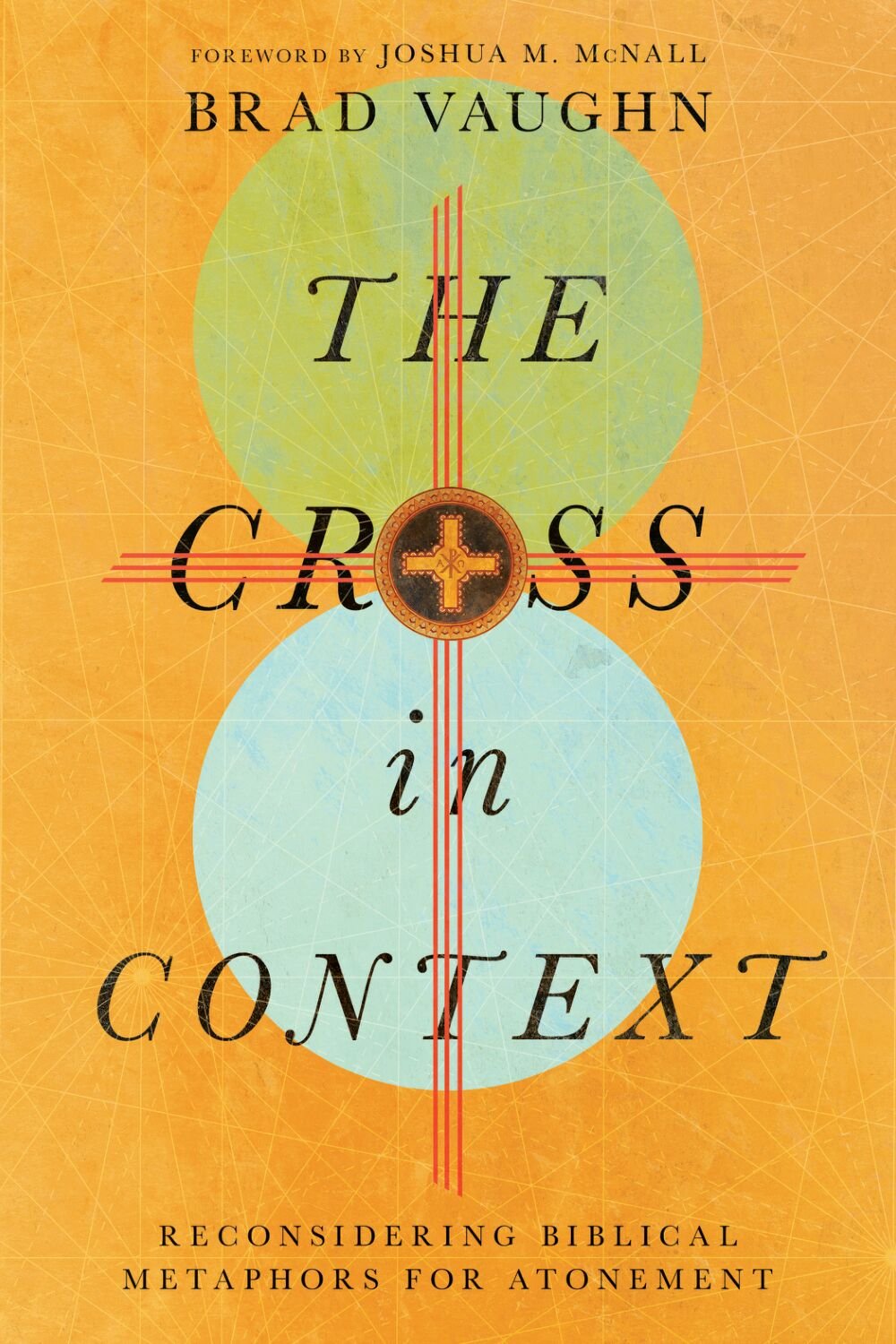The Cross in Context: Reconsidering Biblical Metaphors for Atonement
Brad Vaughn
IVP Academic (2022). 256 pp.
In this work, Brad Vaugn (formerly known by his pseudonym, Jackson Wu) seeks to demonstrate the way metaphors used to articulate atonement theology often conflate the biblical data. After defending the assumption that both the biblical horizon and our own are contextualized, the author performs a detailed analysis of atonement in the OT in its relationship to the purity laws and observes that atonement affects a variety of objects, ranging from people to things like the altar. Key to the argument being advanced, though, is that atonement is not always achieved with the death of an animal but can also be achieved through compensatory gifts (like jewelry in Num 31:48–5). When describing the general purpose for sacrifices, the author summarizes them by saying they “enable people to draw near to God” (p. 66) and achieve this effect “by vindicating God’s honor” (p. 88, italics removed).
As a key part of the overall thesis, the author makes a distinction between the metaphor of sin as debt and punishment for sin (p. 144). According to the author, God’s anger and punishment come on those who fail to deal with their sin, but atonement allows one to avoid this punishment (p. 70). Since atonement can be achieved by means other than killing a sacrificial victim, the author contends “atonement in the Old Testament does not inherently imply a death sentence” (p. 75). Thus, when handling passages like Lev 17:11, the author explains that it is “the giving of one’s life to God” rather than the death itself that effects atonement (p. 86).
In light of this, the author contends that when people say Jesus pays our debt by bearing our punishment, they are overinterpreting the biblical data and confusing the metaphor of sin as debt with the punishment remaining on unaddressed sin. Despite the distinction, the author still wants to retain the notion of Christ as a “penal substitute,” but says that this needs to be understood in the sense that Jesus pays the compensatory penalty for sin on our behalf “without necessarily implying that God the Father punishes Christ the Son” (p. 146; cf. p. 177).
Those familiar with the history of soteriological reflection will recognize similarities with Anselm’s satisfaction theory, though the parallels are only noted obliquely throughout (p. 186, p. 198). For instance, the author writes, “Honor represents the core problem and solution” (p. 183). Our sin fails to give God what he deserves, and therefore we “have robbed God” (p. 63). Humans thus owe God a debt, and sacrificial offerings were offered “as satisfaction for the debt owed” (p. 185). When these key pieces are utilized to interpret Christ’s death, the answer mirrors Anselm’s: “Christ’s death is a sacrifice of compensation, that is, a payment. This ransom pays the debt we cannot pay” (p. 188).
This volume does several things well. First, while acknowledging the effects of context on meaning and interpretation, the author does not make the case that biblical metaphors of atonement are just metaphor and context with no meaning that needs to be preserved. To put this in the author’s words, “Scripture does not minimize sin by describing it with metaphors” (p. 46). As a result, the reality of God’s wrath at sin and its need for punishment are preserved in this account.
Second, the work captures the vast array of means by which atonement is achieved in the OT. Many Christians today read the Pentateuch in light of their understanding of how Christ’s death saves and assume the same rationale is operative in all sacrifices. The author does a fine job of letting the OT represent itself. However, I wonder if the author has not traded one form of context for another. In short, one might conclude the analysis of OT sacrifices becomes the interpretive key for the NT (p.185). If the biblical horizons are contextualized, as the author averred at the outset, might there not be alterations in how atonement was understood during the intertestamental and NT eras? (For arguments to this effect, see Benjamin J. Burkholder, Bloodless Atonement?: A Theological and Exegetical Study of the Last Supper Sayings [Eugene, OR: Pickwick, 2017], 138–46.) Does the OT limit how atonement can be achieved in the NT? While the OT’s representation of atonement should not be dismissed, I do not think it should dictate the parameters for understanding atonement in the NT as it seems to do in this work.
This emphasis on the OT side of the equation brings up one of the weaknesses of the book, namely, that some of the key passages used to support penal substitution, like Rom 3:21–26, have minimal treatment that is unlikely to be compelling to its advocates (pp. 190–93). The same can be said for the author’s reading of Gal 3:13 and the dismissal of Christ’s taking on Israel’s curse (p. 187). (For a defense of Jesus’ death in the context of exilic punishment, see Burkholder, Bloodless Atonement, 148–57.) While the author successfully argues that too much interpretation imposes a penal substitutionary logic on Old Testament sacrifices, the choice to question all biblical support for penal substitution in the same work might have been a bridge too far.
Benjamin Burkholder is a Fellow in Scripture and Theology at Greystone Theological Institute and an Associate Pastor at North Park EPC in Wexford, PA. He holds a PhD in Systematic Theology from Duquesne University and is a member of the St. Hildegard Fellowship of the Center for Pastor Theologians.




